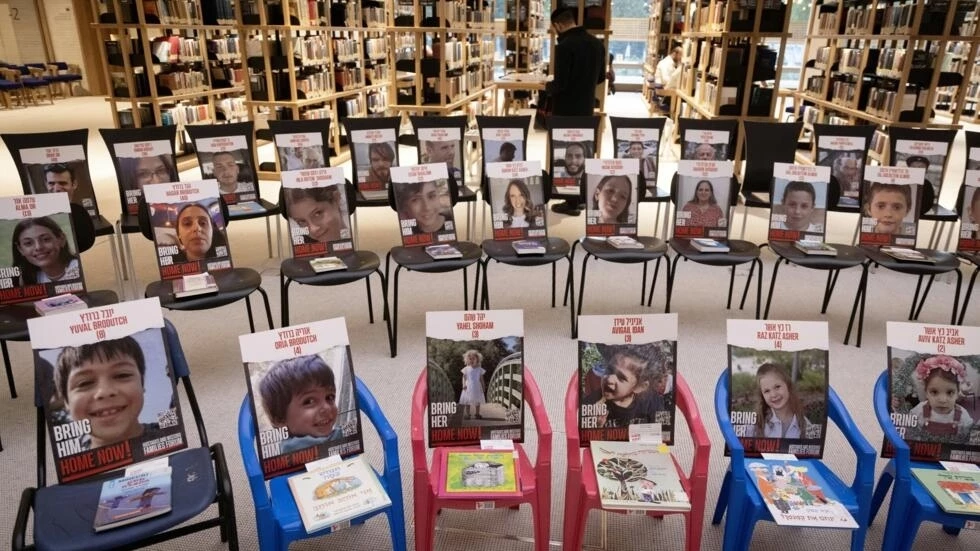Two Hebrew copies of Eric Hill's book "Where's Spot?" stand on tiny children's chairs at Israel's newly opened National Library, alongside pictures of three-year-old Israeli twins taken hostage by Hamas.
An installation featuring one chair for each of the hostages held by Hamas in the Gaza Strip has been installed in the central book well in the library's modernist new home, seven years in the building.
On each chair is a hostage's portrait, along with a book that "reflects his personality, his hobbies, his connection to his family or occupation", said National Library of Israel director Oren Weinberg.
Home to more than five million books and periodicals and thousands of rare texts, the new facility across from the Knesset, Israel's parliament, in Jerusalem, opened last month as the country fought a war against the Palestinian militant group Hamas in the Gaza Strip.
Millions of books in its collection have been stored in robotically managed subterranean stacks that plunge deep beneath the brightly illuminated book well at the building's core.
The outbreak of war on October 7 scuppered a week of festivities planned for the inauguration, Weinberg said.
"But this was maybe the least of our problems considering everything around us," he told AFP.
Hamas's attacks killed at least 1,200 people in Israel, and around 240 others were taken hostage, according to Israeli officials. Israel's war against Hamas has killed more than 14,000 people in the Gaza Strip, according to the Hamas-run health ministry.
When sirens sounded in Jerusalem during the October 7 attacks, conservators rushed to the library to move a collection of rare manuscripts on display for the inauguration to vaults located five stories underground, said Rachel Neiman, a library spokeswoman.
The library has also taken on digital documentation of the attacks, including survivor testimonies, images and videos, and interviews with families of the hostages, she said.
"It's one thing to be able to collect the testimonies," she said. "It's another thing to be able to organise them and preserve them and have them ready for historians in the future."


